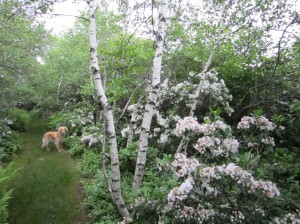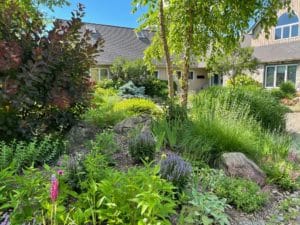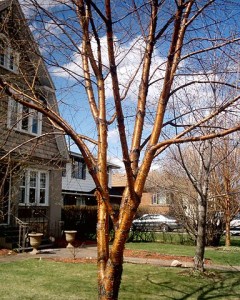Hello fellow readers, When you think about it, the most resilient things in nature are soft and pliable, like blades of grass that bounce back after being trampled. And trees that sway with the wind, enduring severe storms, heavy snow, or ice. Birch trees, one of my favs, have a reputation of being soft-wooded and prone to damage when the opposite is true. There’s strength in flexibility as it enhances endurance—wisdom for all.
Birch are hardwood trees, unbeknownst to most.
Most are surprised to learn that birch trees are classified as hardwood trees along with others such as oaks, maple, hickory, beech, sycamore, and cherry.
In layman’s terms, hardwood trees are deciduous, losing their leaves, and almost all of them are flowering, though not always noticeably so. Their wood has water-conducting cells and dense fiber cells, while the softwood trees have only the cells that conduct water.
It’s true that birch trees have shallow root systems and therefore cannot handle even short periods of drought or heated soil well, but they thrive in cool, moist soils. So select a site where soil will remain shaded by other plants yet where the leaves will enjoy the full sun for most of the day. They’ll thrive for 40 to 50 years in the right environment.
Why River Birch is a favorite
River Birch, Betula nigra, is my favorite native Birch in our area. This beauty is stunning in our winter landscape, with layers of salmon-colored bark peeling back to reveal creamy white inner bark. And it can be grown as either a single trunk or multi-stemmed tree.
‘Heritage’ and ‘Dura Heat’ River Birch are more tolerant of heat and dryness than other varieties and are highly resistant to bronze birch borer and leaf spot diseases that have devastated others.
Contrary to popular belief that birch trees are susceptible to winter damage, its pliable wood can endure winds, ice, and snow and can go with the flow.
A tree that cannot bend will crack.
Proof of performance resides in one of my favored respite spots – Big Pocono State Park, which sits on top of Camelback Mountain Resort in Tannersville, PA. I believe it’s the highest elevation in the area and coined it the Top of the World. You can see parts of eastern Pennsylvania and New Jersey, and New York from there. Native Birch grace the trails, either Paper Birch or Mountain Paper Birch, I believe, that have adapted well to the windy conditions.

Miss Elli Mae at the Top of the World
All living things become stiff when they die and, at which time, they lose all strength. As softwood and hardwood trees age, they grow rigid and brittle and are more susceptible to winds and fire. A tree that cannot bend will crack.
We can make the analogy in the garden of life.
Many consider staying rigid in views as a form of strength. But by remaining steadfast on an opinion or idea without considering other points of view, life will not be fluid and serene. Instead, be flexible and more tolerant of opposing feelings. Listen rather than arguing or telling. Look at the goodness in the person. You don’t have to agree. Just listen, maybe imagine yourself in their shoes, and embrace that they are part of your world – our world, one world. And notice over time how relationships, how life, will improve. Imagine if we all did just that.
As written in Verse 76 of the Tao Te Ching, written over 2500 years ago, “The hard and stiff will be broken. The soft and supple will prevail.”
Garden dilemmas? AskMaryStone@gmail.com (and on your favorite Podcast App.)
You’ll enjoy more of the story in Episode 43 of the Garden Dilemmas Podcast:
Other birches deserving a mention:
As Doug Tallamy writes in Bringing Nature Home, birch trees support 456 species of butterflies, and moths ranked number four in his list of woody plants that support and nurture them. You may have guessed if you recall the column Native Plants, especially Oaks, are Essential, Oak trees rank number one, Willow two, and Cherry & Plum number three.
In addition to River Birch and Paper Birch, Yellow Birch, also known as Swamp Birch, have glorious peeling bark. Beyond moths and butterflies, the flower buds and seeds are food for “songbirds, small mammals, grouse, and turkeys,” Tallamy writes. And something I hadn’t considered, the exfoliating bark offers hiding spots for insects during the winter, which then supplies food for woodpeckers.
Then there’s Black Birch and Gray Birch though they don’t have the peeling bark. Still, as Doug Tallamy says, “they mix well with sugar maples and red maples, particularly in mountainous areas of the northeast.” — my neck of the woods.
Links for more about the Birch Tree’s listed:
Yellow Birch, also known as Swamp Birch (Betula alleghaniensis), Black Birch ( Betula lenta), River Birch (Betula Nigra), Gray Birch (Betula populifolia), Paper Birch (Betula papyrifera), and Mountain Paper Birch (Betula cordifolia)





